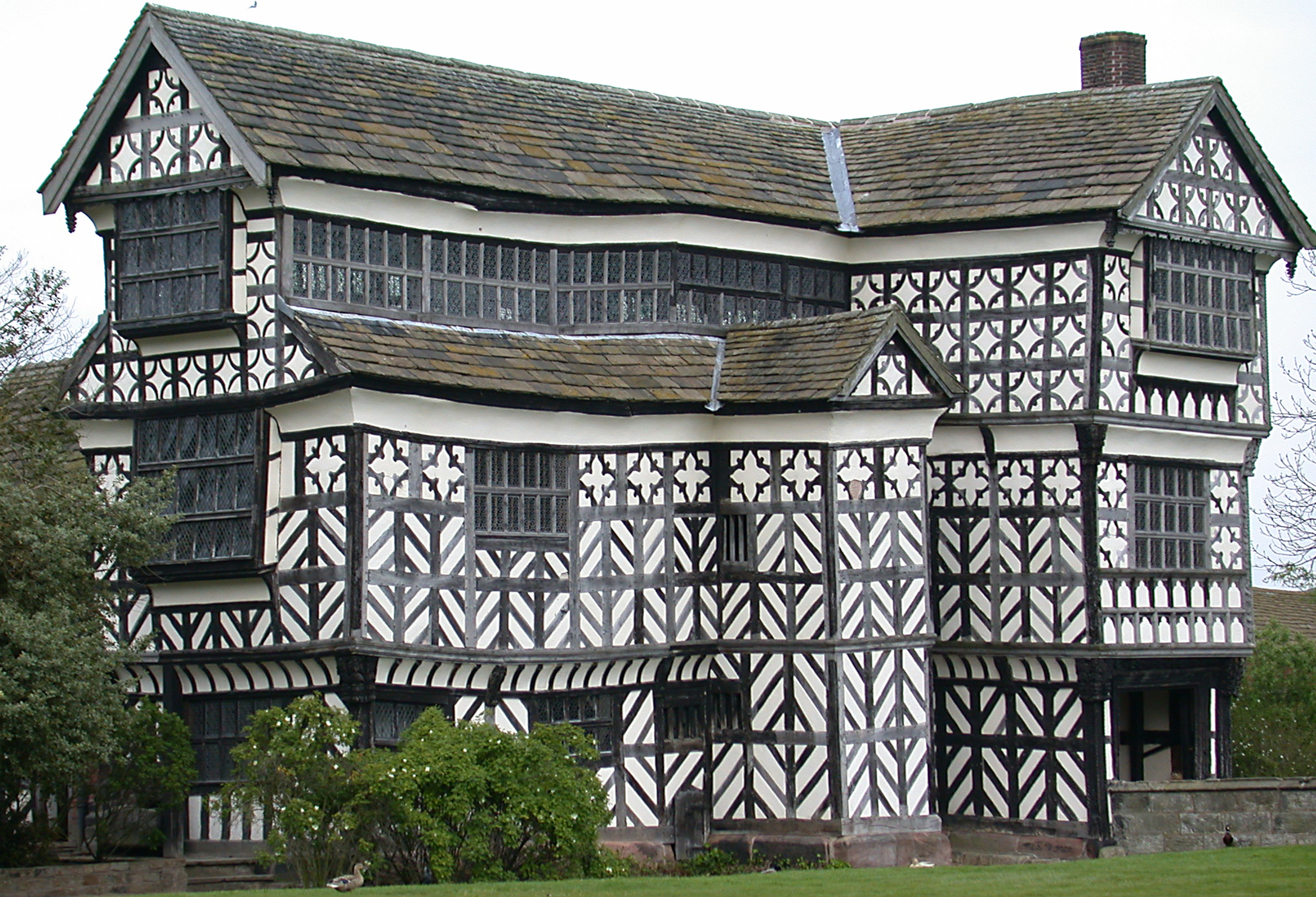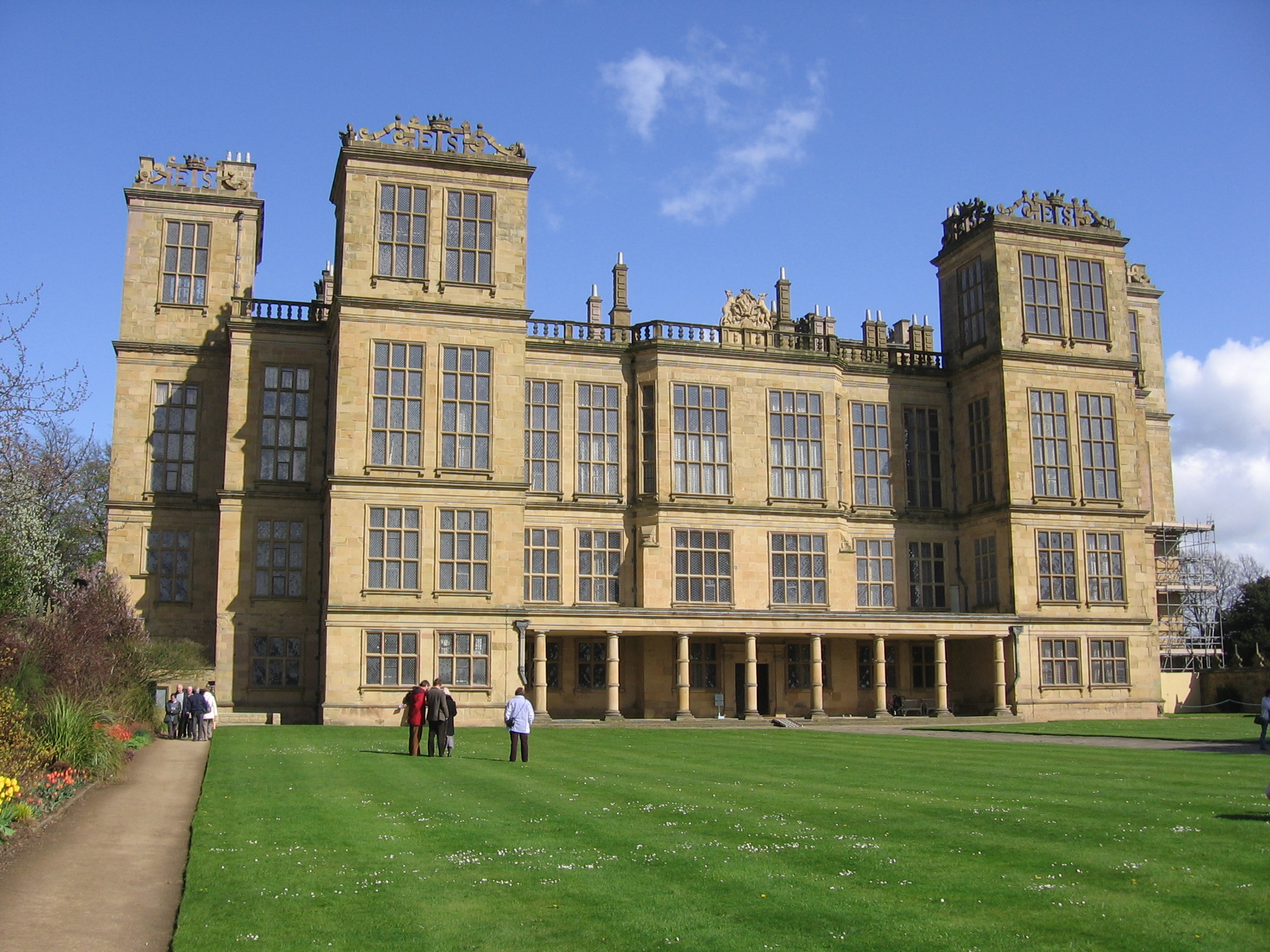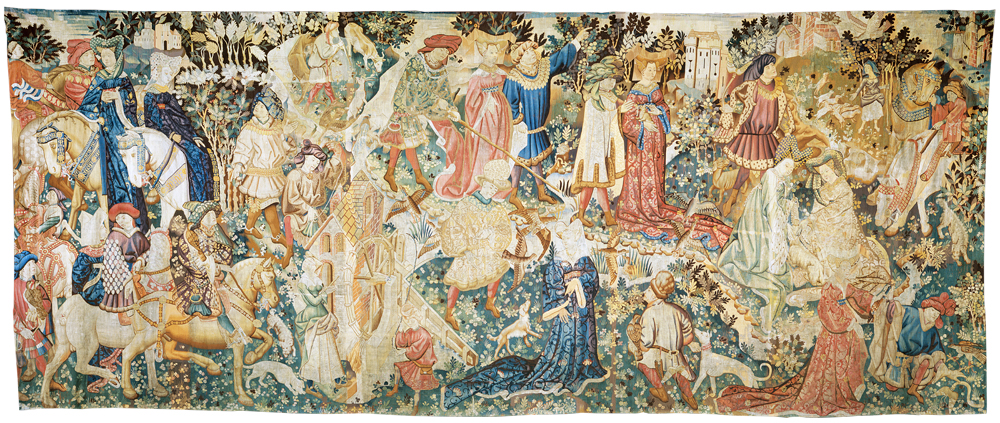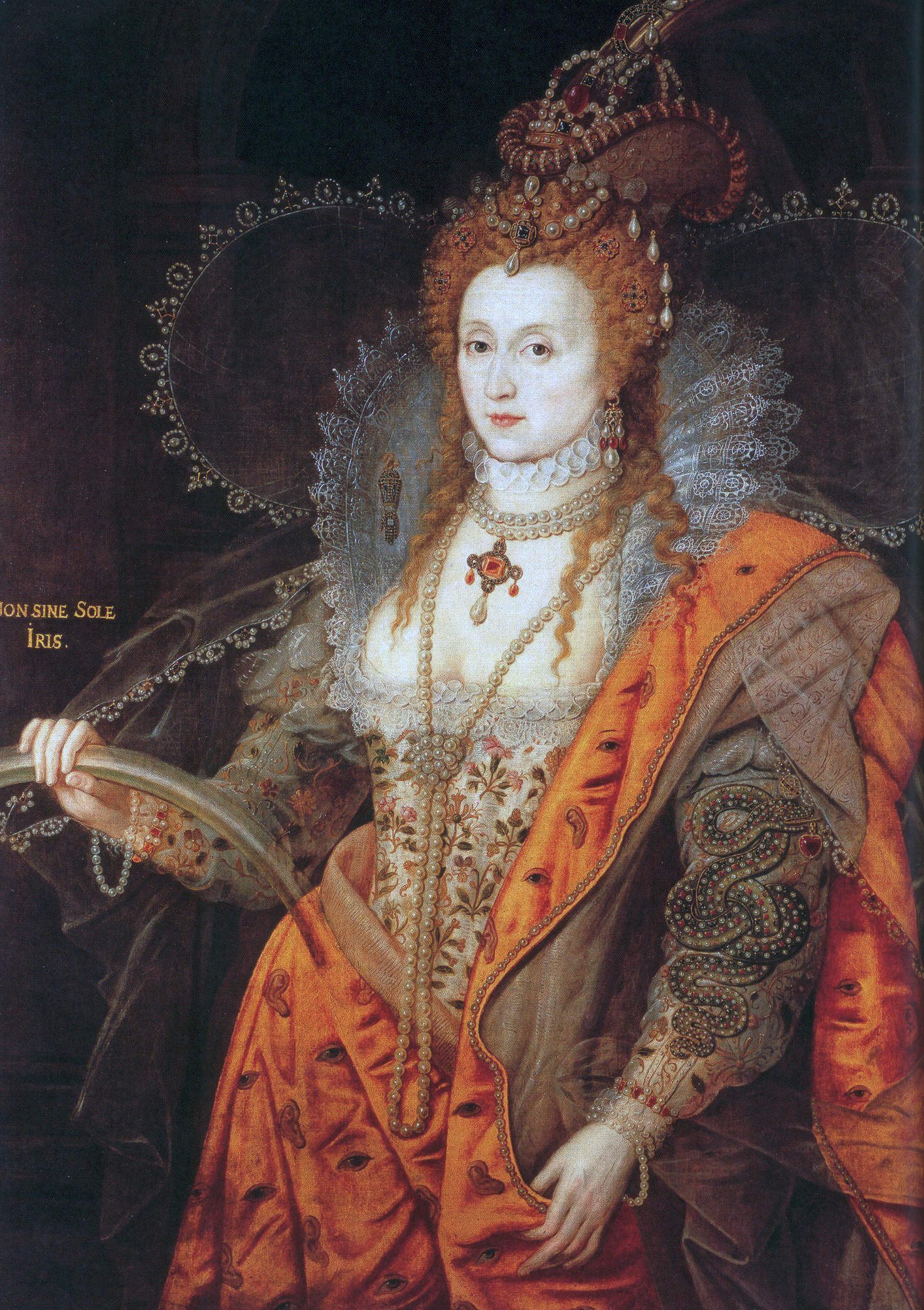Following England's medieval phase, a new visual language emerged. During the Elizabethan period, castles were no longer built and people bought new country houses, which meant they had more money to spend. People therefore began to display fine art and ornaments in their homes with their money.
During the reign of Queen Elizabeth I in the 16th century, the gothic art style in England was being replaced by renaissance art of Rome. An Elizabethan style emerged which affected art and architecture. English visual language was becoming independent of European renaissance art and influence from Rome.
little Morton hall, Cheshire 1550s

Hardwick Hall, Derbyshire
Robert Smythson 1591-1597

There were influences from Roman architecture in English buildings such as columns, but the buildings had a unique English style too. There was emphasis on a symmetrical structure to the buildings.
Buildings had a Long Gallery, which was a long corridor once used for walks. This room became a place of decoration with many artworks presented there.
The Devonshire Tapestries, Hardwick Hall

The high chamber bedroom was the most important room in the home. There was lots of décor, plasterwork and paintings. A lot of paintings at that time were English replicas of Renaissance art.
Renaissance artists didn't just focus on portraiture. Fashion and ceramics were also produced by renaissance artists and designers. This influenced the Elizabethan style.
Plasterwork evolved to become an art form, and furniture was not just designed for function, but fashion too. Elizabethan decoration emphasised uniqueness and modernity.
sea dog table - hardwick hall
A phase of consumption began in England; people would buy things to show off their wealth and status. People would imitate others and buy what they were buying in order to stay high up in social status. Elizabeth I used material possessions as an instrument of rule, to make people buy her gifts. The visual language was heavily based on status and expressing wealth. Consumer demand helped merchants prosper, and foreign trade and communication gave English visual language foreign ideas.
Nick Hilliard - portrait of Elizabeth I

Jewellery was significant in Elizabethan society, and different stones had different symbolic meanings.
The Rainbow Portrait - Isaac Oliver 1600

The jewelled serpent symbolised wisdom
Ruby symbolised the heart - suggesting women are lead by their heart.
Armanda Portrait - George Gower
Hand on the globe represents her wish for an empire.
.jpg)
In the early 17th century, Elizabeth I died and James I becomes the new ruler of England. A new visual language was born and the Steward period risen. Jacobean style was created and art and architecture began to change. Buildings were formed with brick instead of stone, less glass was used because of it's high cost. The symmetry was still incorporated in architecture though.
Blickling Hall

Décor in this era was expressive and displayed pleasure of the senses. It was more modern in design elements.
Burton Agnes Yorkshire

The long gallery in the home shifted to the Great Hall. Lots of Jacobean furniture was used to emphasise luxury and wealth.
No comments:
Post a Comment